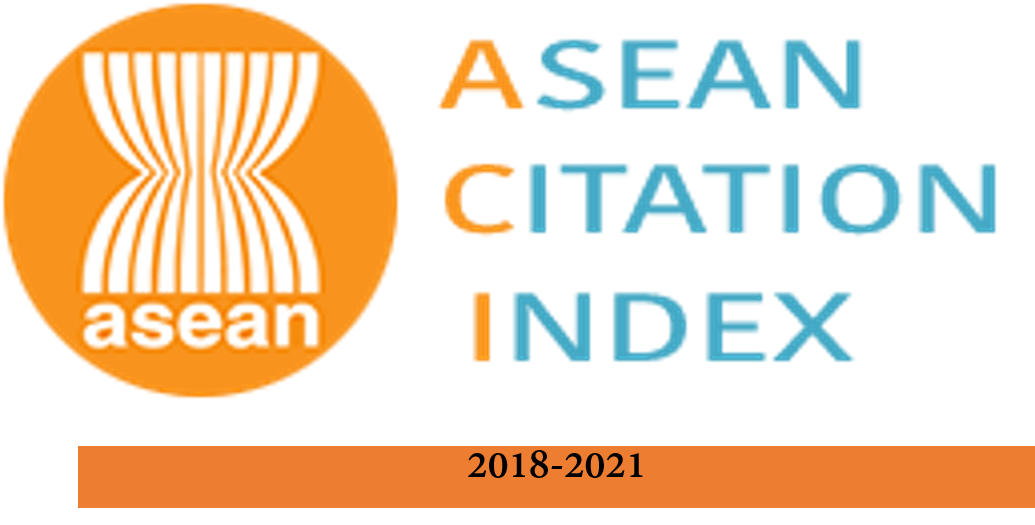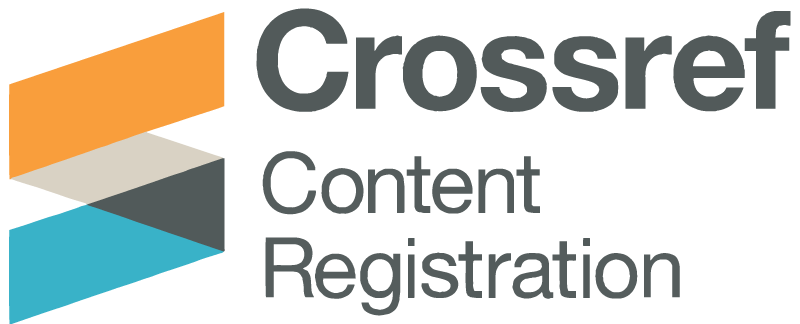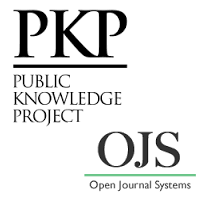Enhancing Academic Success through Utilization of Library Resources in a Public University in the Philippines
Abstract
The library is a pillar in shaping the academic landscape offering a wealth of resources and services for student learning. This study correlated library resource use with undergraduate academic performance, sampling 800 clients across academic years 2015-2016 and 2018-2019. It examined the frequency of library resource use in relation to students GWA, deans list achievement, and board exam passing rates. Findings showed a strong positive correlation between GWA and the frequency with which library resources were used. It was discovered that students used the library to check out books, periodicals, and internet resources. The frequency of accessing library resources and making it to the deans list were significantly correlated. Students used the library to read, research, and prepare for tests and quizzes as part of their course requirements. Additionally, this study found a strong and moderately favorable correlation between students success on licensing exams and how frequently they used the librarys service like utilizing library resources, such as reviewers and references, to enhance their understanding of what is required to carry out requirements and activities. This study, conducted in the southern region of the Philippines, provides fresh perspective on the evolving dynamics and regional nuance of library use that goes beyond the traditional services.
Keywords:
Library, library resources, library utilization, student achievement, student success
References
Allison, D. (2015). Measuring the academic impact of libraries. Portal: Libraries and the Academy, 15(1), 30-
40. https://doi.org/10.1353/pla.2015.0003
Astin, A. W. (1970). The methodology of research on college impact. Sociology of Education, 43, 223-254.
Astin, A. W. (1991). Assessment for excellence: The philosophy and practice of assessment and evaluation in
higher education. New York: McMillan.
Astin, A. W., & Antonio, A. L. (2012). Assessment for excellence: The philosophy and practice of assessment
and evaluation in higher education (2nd ed.). Lanham: Rowman & Littlefield Publishers, Inc.
Banleman, K., & Adjoa, Y. F. (2017). An analysis of the correlation between academic library use and
students academic performance: A case study of UDS-WA campus. International and Knowledge
Management, 7(3). https://core.ac.uk/download/pdf/234672438.pdf
Bhandari, P. (2020). An introduction to quantitative research. Retrieved from https://www.scribbr.com/
methodology/quantitative-research/
Bukidnon State University Library. (2019). Manual of operations.
Carvalho e Rodrigues, M., & Mandrekar, B. (2020). Impact of academic library services on students
success and performance. Library Philosophy and Practice (e-journal), 4246. Retrieved from https://
digitalcommons.unl.edu/libphilprac/4246
Cherry, E. G., Rollins, S. H., & Evans, T. (2013). Proving our worth: The impact of electronic resource usage
on academic achievement. College & Undergraduate Libraries, 20, 386-398. https://doi.org/10.1080/10
691316.2013.829367
Kot, F. C., & Jones, J. (2015). The impact of library resource utilization on undergraduate students academic
performance: A propensity score matching design. College & Research Libraries, 76, 566-586. https://
doi.org/10.5860/crl.76.5.566
Cramer, D. (1998). Fundamental statistics for social research. London: Routledge.
Cramer, D., & Howitt, D. (2004). The SAGE dictionary of statistics. London: SAGE.
Deci, E. L., & Ryan, R. M. (2012). Self-determination theory. In Handbook of Theories of Social Psychology
(Vol. 1, pp. 416-436).
Doane, D. P., & Seward, L. E. (2011). Measuring skewness. Journal of Statistics Education, 19(2), 1-18.
Gay, L. R., Mills, G. E., & Airasian, P. (2012). Educational research: Competencies for analysis and
applications (10th ed.). Upper Saddle River, NJ: Pearson Education.
Gill, P., Stewart, K., Treasure, E., et al. (2008). Methods of data collection in qualitative research: Interviews
and focus groups. British Dental Journal, 204, 291-295. https://doi.org/10.1038/bdj.2008.192
Goodall, D., & Pattern, D. (2011). Academic library non/low use and undergraduate student achievement.
Library Management, 32(3), 159-170. https://doi.org/10.1108/01435121111128710
Herrero, C. C. (2015). Influence of selected factors on CPA licensure examination results. International
Letters of Social and Humanistic Sciences, 64. Retrieved from https://www.ssoar.info/ssoar/handle/
document/56817
Jensen, M. (2015). Personality traits, learning, and academic achievements. Journal of Education and
Learning, 4(4). https://doi.org/10.5539/jel.v4n4p78
LeMaistre, T., Shi, Q., & Thanki, S. (2018). Connecting library use to student success. Portal: Libraries and
the Academy, 18(1), 117-140. https://doi.org/10.1353/pla.2018.0006
McCarthy, S. C. (2017). Exploring library usage by online learners with student success. The Community
College Enterprise, 23(2), 27-31. Retrieved from https://search.proquest.com/docview/1985877097
McCombes, S. (2019). Descriptive research. Retrieved from https://www.scribbr.com/methodology/
descriptive-research/
Martin, W. E., & Bridgmon, K. D. (2012). Quantitative and statistical research methods: From hypothesis to
results. Somerset, NJ: Wiley.
Matthews, S. (2014). Why do we still need libraries? We dont. Retrieved from https://21stcenturylibrary.
com/2014/02/03/why-do-we-still-need-libraries-we-dont/
Nagata, H., Toda, A., & Kytomaki, P. (2007). Students patterns of library use and their learning outcomes.
Joho Media Kenkyu, 6(1), 19.
Nazir, A. B. (2019). Impact of advent of electronic information resources on performance of library users. The
Bottom Line, 32(2), 135-143. https://doi.org/10.1108/BL-12-2018-0048
Nurse, R., Baker, K., & Gambles, A. (2018). Library resources, student success and the distance-learning
university. Information and Learning Science, 119(1), 77-86. https://doi.org/10.1108/ILS-03-2017-0022
Okorie, J. N., Nwokocha, U., & Ibenne, S. K. (2018). Influence of electronic information resources utilization
on academic performance of HND students in Federal Polytechnic, Nekede, Owerri. Library Philosophy
& Practice.
Puarungroj, W., Pongpatrakant, P., Boonsirisumpun, N., & Phromkhot, S. (2018). Investigating factors
affecting library visits by university students using data mining. LIBRES: Library and Information
Science Research Electronic Journal, 28(1), 25-33. Retrieved from https://search.proquest.com/
docview/2258087704
Razali, N. M., & Wah, Y. B. (2011). Power comparisons of Shapiro-Wilk, Kolmogorov-Smirnov, Lilliefors
and Anderson-Darling tests. Journal of Statistical Modeling and Analytics, 2(1), 21-33.
Robinson, R. S. (2014). Purposive sampling. In A. C. Michalos (Ed.), Encyclopedia of Quality of Life and
Well-being Research. Springer, Dordrecht. https://doi.org/10.1007/978-94-007-0753-5_2337
Rodrigues, M. C., & Mandrekar, B. (2020). Impact of academic library services on studentssuccess and
performance. Library Philosophy and Practice. University of Nebraska-Lincoln. Retrieved from https://
digitalcommons.unl.edu/libphilprac/4246
Ryan, R. (2009). Self-determination theory and well-being. Social Psychology, 84(822), 848.
Shapiro, S. S., & Wilk, M. B. (1965). An analysis of variance test for normality (Complete Samples).
Biometrika, 52(3/4), 591-611.
Soria, K. M., Fransen, J., & Nackerud, S. (2017). The impact of academic library resources on undergraduates
degree completion. College & Research Libraries, 78(6). Retrieved from https://crl.acrl.org/index.php/
crl/article/view/16737/18250
Soria, K. M., Fransen, J., & Nackerud, S. (2013). Library use and undergraduate student outcomes: New
evidence for students retention and academic success. Portal: Libraries and the Academy, 13(2), 147-
164. https://doi.org/10.1353/pla.2013.0010
Sterner, E. A. (2021). Impact of academic libraries on grade point average (GPA): A review. Performance
Measurement and Metrics, 22(1), 71-85. https://doi.org/10.1108/PMM-07-2020-0032
Stemmer, J. K., & Mahan, D. M. (2016). Investigating the relationship of library usage to student outcomes.
College & Research Libraries, 77, 359-375.
Thorpe, A., Lukes, R., Bever, D. J., & He, Y. (2016). The impact of the academic library on student success:
Connecting the dots. Portal: Libraries and the Academy, 16(2), 373-392. https://doi.org/10.1353/pla.2016.0027
Truluck, J. E., & Courtenay, B. C. (1995). Learning style preferences among older adults. Educational
Gerontology, 5(3), 221-236. https://doi.org/10.1080/036012799267846
Tzoc, E. (2016). Libraries and faculty collaboration: Four digital scholarship examples. Journal of Web
Librarianship, 10(2), 124-136. https://doi.org/10.1080/19322909.2016.1150229
Wallace, F. (2019). The benefits of libraries for teachers and students. Teacher Habits. Retrieved from https://
teacherhabits.com/the-benefits-of-libraries-for-teachers-and-students/
Wells, J. (1994). The influence of library usage on undergraduate academic success. Retrieved from https://
www.tandfonline.com/doi/pdf/10.1080/00048623.1995.10754923
Zimmerman, B. J. (2001). Theories of self-regulated learning and academic achievement: An overview
and analysis. In B. J. Zimmerman & D. H. Schunk (Eds.), Self-regulated learning and academic
achievement: Theoretical perspectives (pp. 1-37). Lawrence Erlbaum Associates Publishers.
Zimmerman, B. J. (2008). Investigating self-regulation and motivation: Historical background,
methodological developments, and future prospects. American Educational Research Journal, 45(1),
166-183. https://doi.org/10.3102/0002831207312909
40. https://doi.org/10.1353/pla.2015.0003
Astin, A. W. (1970). The methodology of research on college impact. Sociology of Education, 43, 223-254.
Astin, A. W. (1991). Assessment for excellence: The philosophy and practice of assessment and evaluation in
higher education. New York: McMillan.
Astin, A. W., & Antonio, A. L. (2012). Assessment for excellence: The philosophy and practice of assessment
and evaluation in higher education (2nd ed.). Lanham: Rowman & Littlefield Publishers, Inc.
Banleman, K., & Adjoa, Y. F. (2017). An analysis of the correlation between academic library use and
students academic performance: A case study of UDS-WA campus. International and Knowledge
Management, 7(3). https://core.ac.uk/download/pdf/234672438.pdf
Bhandari, P. (2020). An introduction to quantitative research. Retrieved from https://www.scribbr.com/
methodology/quantitative-research/
Bukidnon State University Library. (2019). Manual of operations.
Carvalho e Rodrigues, M., & Mandrekar, B. (2020). Impact of academic library services on students
success and performance. Library Philosophy and Practice (e-journal), 4246. Retrieved from https://
digitalcommons.unl.edu/libphilprac/4246
Cherry, E. G., Rollins, S. H., & Evans, T. (2013). Proving our worth: The impact of electronic resource usage
on academic achievement. College & Undergraduate Libraries, 20, 386-398. https://doi.org/10.1080/10
691316.2013.829367
Kot, F. C., & Jones, J. (2015). The impact of library resource utilization on undergraduate students academic
performance: A propensity score matching design. College & Research Libraries, 76, 566-586. https://
doi.org/10.5860/crl.76.5.566
Cramer, D. (1998). Fundamental statistics for social research. London: Routledge.
Cramer, D., & Howitt, D. (2004). The SAGE dictionary of statistics. London: SAGE.
Deci, E. L., & Ryan, R. M. (2012). Self-determination theory. In Handbook of Theories of Social Psychology
(Vol. 1, pp. 416-436).
Doane, D. P., & Seward, L. E. (2011). Measuring skewness. Journal of Statistics Education, 19(2), 1-18.
Gay, L. R., Mills, G. E., & Airasian, P. (2012). Educational research: Competencies for analysis and
applications (10th ed.). Upper Saddle River, NJ: Pearson Education.
Gill, P., Stewart, K., Treasure, E., et al. (2008). Methods of data collection in qualitative research: Interviews
and focus groups. British Dental Journal, 204, 291-295. https://doi.org/10.1038/bdj.2008.192
Goodall, D., & Pattern, D. (2011). Academic library non/low use and undergraduate student achievement.
Library Management, 32(3), 159-170. https://doi.org/10.1108/01435121111128710
Herrero, C. C. (2015). Influence of selected factors on CPA licensure examination results. International
Letters of Social and Humanistic Sciences, 64. Retrieved from https://www.ssoar.info/ssoar/handle/
document/56817
Jensen, M. (2015). Personality traits, learning, and academic achievements. Journal of Education and
Learning, 4(4). https://doi.org/10.5539/jel.v4n4p78
LeMaistre, T., Shi, Q., & Thanki, S. (2018). Connecting library use to student success. Portal: Libraries and
the Academy, 18(1), 117-140. https://doi.org/10.1353/pla.2018.0006
McCarthy, S. C. (2017). Exploring library usage by online learners with student success. The Community
College Enterprise, 23(2), 27-31. Retrieved from https://search.proquest.com/docview/1985877097
McCombes, S. (2019). Descriptive research. Retrieved from https://www.scribbr.com/methodology/
descriptive-research/
Martin, W. E., & Bridgmon, K. D. (2012). Quantitative and statistical research methods: From hypothesis to
results. Somerset, NJ: Wiley.
Matthews, S. (2014). Why do we still need libraries? We dont. Retrieved from https://21stcenturylibrary.
com/2014/02/03/why-do-we-still-need-libraries-we-dont/
Nagata, H., Toda, A., & Kytomaki, P. (2007). Students patterns of library use and their learning outcomes.
Joho Media Kenkyu, 6(1), 19.
Nazir, A. B. (2019). Impact of advent of electronic information resources on performance of library users. The
Bottom Line, 32(2), 135-143. https://doi.org/10.1108/BL-12-2018-0048
Nurse, R., Baker, K., & Gambles, A. (2018). Library resources, student success and the distance-learning
university. Information and Learning Science, 119(1), 77-86. https://doi.org/10.1108/ILS-03-2017-0022
Okorie, J. N., Nwokocha, U., & Ibenne, S. K. (2018). Influence of electronic information resources utilization
on academic performance of HND students in Federal Polytechnic, Nekede, Owerri. Library Philosophy
& Practice.
Puarungroj, W., Pongpatrakant, P., Boonsirisumpun, N., & Phromkhot, S. (2018). Investigating factors
affecting library visits by university students using data mining. LIBRES: Library and Information
Science Research Electronic Journal, 28(1), 25-33. Retrieved from https://search.proquest.com/
docview/2258087704
Razali, N. M., & Wah, Y. B. (2011). Power comparisons of Shapiro-Wilk, Kolmogorov-Smirnov, Lilliefors
and Anderson-Darling tests. Journal of Statistical Modeling and Analytics, 2(1), 21-33.
Robinson, R. S. (2014). Purposive sampling. In A. C. Michalos (Ed.), Encyclopedia of Quality of Life and
Well-being Research. Springer, Dordrecht. https://doi.org/10.1007/978-94-007-0753-5_2337
Rodrigues, M. C., & Mandrekar, B. (2020). Impact of academic library services on studentssuccess and
performance. Library Philosophy and Practice. University of Nebraska-Lincoln. Retrieved from https://
digitalcommons.unl.edu/libphilprac/4246
Ryan, R. (2009). Self-determination theory and well-being. Social Psychology, 84(822), 848.
Shapiro, S. S., & Wilk, M. B. (1965). An analysis of variance test for normality (Complete Samples).
Biometrika, 52(3/4), 591-611.
Soria, K. M., Fransen, J., & Nackerud, S. (2017). The impact of academic library resources on undergraduates
degree completion. College & Research Libraries, 78(6). Retrieved from https://crl.acrl.org/index.php/
crl/article/view/16737/18250
Soria, K. M., Fransen, J., & Nackerud, S. (2013). Library use and undergraduate student outcomes: New
evidence for students retention and academic success. Portal: Libraries and the Academy, 13(2), 147-
164. https://doi.org/10.1353/pla.2013.0010
Sterner, E. A. (2021). Impact of academic libraries on grade point average (GPA): A review. Performance
Measurement and Metrics, 22(1), 71-85. https://doi.org/10.1108/PMM-07-2020-0032
Stemmer, J. K., & Mahan, D. M. (2016). Investigating the relationship of library usage to student outcomes.
College & Research Libraries, 77, 359-375.
Thorpe, A., Lukes, R., Bever, D. J., & He, Y. (2016). The impact of the academic library on student success:
Connecting the dots. Portal: Libraries and the Academy, 16(2), 373-392. https://doi.org/10.1353/pla.2016.0027
Truluck, J. E., & Courtenay, B. C. (1995). Learning style preferences among older adults. Educational
Gerontology, 5(3), 221-236. https://doi.org/10.1080/036012799267846
Tzoc, E. (2016). Libraries and faculty collaboration: Four digital scholarship examples. Journal of Web
Librarianship, 10(2), 124-136. https://doi.org/10.1080/19322909.2016.1150229
Wallace, F. (2019). The benefits of libraries for teachers and students. Teacher Habits. Retrieved from https://
teacherhabits.com/the-benefits-of-libraries-for-teachers-and-students/
Wells, J. (1994). The influence of library usage on undergraduate academic success. Retrieved from https://
www.tandfonline.com/doi/pdf/10.1080/00048623.1995.10754923
Zimmerman, B. J. (2001). Theories of self-regulated learning and academic achievement: An overview
and analysis. In B. J. Zimmerman & D. H. Schunk (Eds.), Self-regulated learning and academic
achievement: Theoretical perspectives (pp. 1-37). Lawrence Erlbaum Associates Publishers.
Zimmerman, B. J. (2008). Investigating self-regulation and motivation: Historical background,
methodological developments, and future prospects. American Educational Research Journal, 45(1),
166-183. https://doi.org/10.3102/0002831207312909
Published
2023-12-29
Section
Articles
Copyright (c) 2023 Asia Pacific Journal of Social and Behavioral Sciences
Copyright holder is the Bukidnon State University.
How to Cite
Estrada, Chandrani Yves E., Florence Veneranda O. Gutierrez, Maribel G. Valdez, and Reysa C. Alenzuela. Enhancing Academic Success through Utilization of Library Resources in a Public University in the Philippines. Asia Pacific Journal of Social and Behavioral Sciences, 21 (2023): 71-83.
Estrada, C.Y.E., Gutierrez, F.V. O., Valdez, M.G., & Alenzuela, R.C. Enhancing Academic Success through Utilization of Library Resources in a Public University in the Philippines. Asia Pacific Journal of Social and Behavioral Sciences, 21, 71-83.
Most read articles by the same author(s)
- Maribel G. Valdez, Beatriz C. Garcia, Philippine Investment in the Tertiary Education of State Universities and Colleges , Asia Pacific Journal of Social and Behavioral Sciences: Vol 9 (2012): The Bukidnon State University Research Journal
- Maribel G. Valdez, Developing Students' Research Writing Skills , Asia Pacific Journal of Social and Behavioral Sciences: Vol 11 (2014): The Bukidnon State University Research Journal
- Maribel G. Valdez, Zita I. Dales, Typology of Bukidnon State University Using the Commission of Higher Education Standards , Asia Pacific Journal of Social and Behavioral Sciences: Vol 11 (2014): The Bukidnon State University Research Journal
- Estela C. Itaas, Maribel G. Valdez, A Research-Based Evaluation Instrument of Teaching Performance Focused on the Learning Outcomes , Asia Pacific Journal of Social and Behavioral Sciences: Vol 12 (2015): Asia Pacific Journal of Social and Behavioral Sciences
- Estela C. Itaas, Maribel G. Valdez, Experiences of Graduate Students in Thesis Writing: Its Implications to ASEAN Integration , Asia Pacific Journal of Social and Behavioral Sciences: Vol 12 (2015): Asia Pacific Journal of Social and Behavioral Sciences
- Maribel G. Valdez, Lina C. Hidaglo, An Initial Foray into the Productive Pedagogies Practices of an English language Program: Realities , Asia Pacific Journal of Social and Behavioral Sciences: Vol 15 (2018): Asia Pacific Journal of Social and Behavioral Sciences
- Maribel G. Valdez, Jiemalyn B. Paulican, Jasmine J. Adriatico, Exploring the Alternative Learning System Radio-based Instruction , Asia Pacific Journal of Social and Behavioral Sciences: Vol 15 (2018): Asia Pacific Journal of Social and Behavioral Sciences
- Beverly B. Bicar, Lora E. Añar, Maribel G. Valdez, Analyzing the Risks Affecting the School-aged Children in Disaster-Prone Areas in the Province of Bukidnon , Asia Pacific Journal of Social and Behavioral Sciences: Vol 18 (2020): Asia Pacific Journal of Social and Behavioral Sciences - Special Edition
- Maribel G. Valdez, Psyche T. Malabo, Gem Aiah B. Blanco, Jesus B. Juevesano, Dante S. Victoria, Jr, Ann Sheila C. Del Rosario, Vilma O. Lorca, Mark Lyster Semortin, Richard Ian Mark T. Necosia, Rosanna S. Generato, Ria Rita R. Muegue, Wilma L. Gregory, Good Governance Principles in Decision-making of a State Higher Education Institution’s Governing Body , Asia Pacific Journal of Social and Behavioral Sciences: Vol 20 (2022): Asia Pacific Journal of Social and Behavioral Sciences










